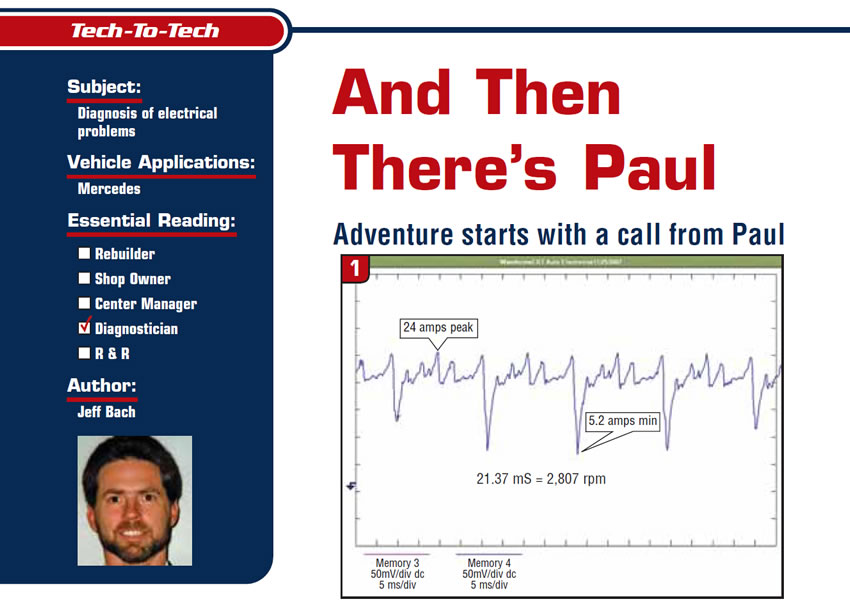Tough Times Bring Out Creative Types
Tough economic times bring with them differing circumstances for different industries. For those of us in the independent automotive-service field, we may be seeing more and more repairs being attempted by less- and less-qualified technicians. It seems like there is an endless supply of advice to help automotive-service “newbies” figure out their car’s technical woes, thereby saving them the time and trouble of taking a car to a “professional.”
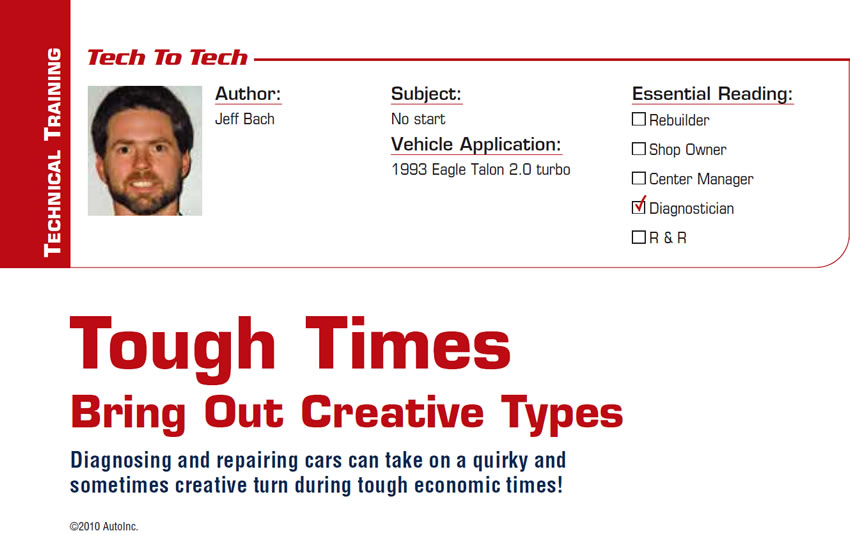
Diagnosing without Testing ‘Like Throwing Darts in Dark’
This particular 2003 Toyota Corolla came to my friend’s shop with a simple miss and a code for the No. 4 coil confirmation signal not being received by the PCM. The first part tried was a coil from the dealer. With the same code coming back and the engine still missing on the same cylinder, more testing revealed that the injector for that cylinder was not operating, and another was substituted. This resulted in no change, and another coil was tried, then switched to another cylinder. Injectors were switched around, and then a PCM was ordered and the car was sent to us for programming. My friend assured me that he wanted nothing further to do with the car and told us to find the problem.
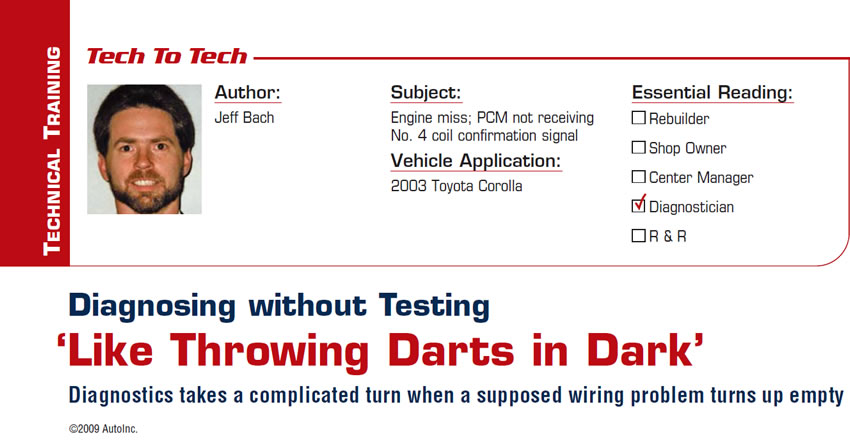
A Tale of the Blue Catera
We just finished a Cadillac Catera for a customer of another shop that took the car to still another shop that brought it to me to put on a timing belt. We were told that the first shop had replaced most of the parts because the technician found a Web site that addressed the problem this car was having. The different fixes, the Web site suggested, were to replace most of the parts – none of which seemed to fix his problem. I’m sorry if anyone gets offended out there, but it just seems that there is something inherently wrong with an auto shop that fixes cars by popular opinion on an Internet Web site. As I’ve heard Mark Warren say, “A monkey with a dart board would have a better chance at guessing right.”
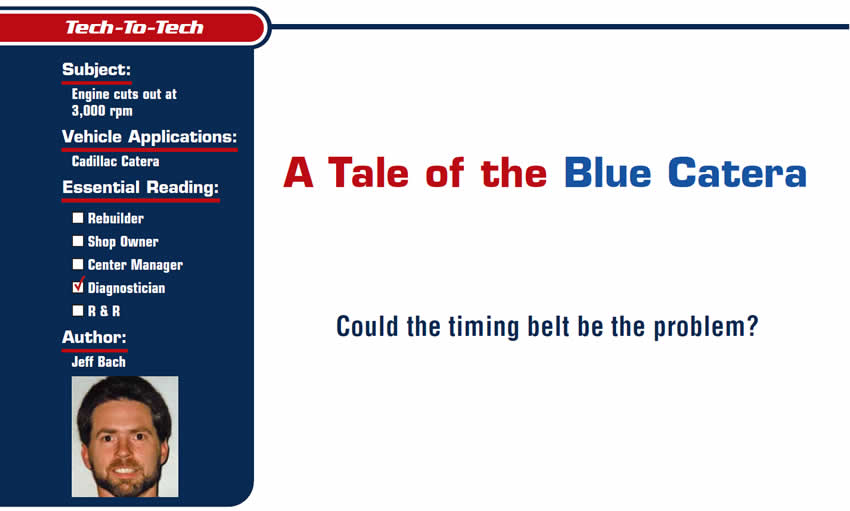
The Proper How-Tos of Scopin’
I’m working on a 1997 Chevy truck that has an “intermittent transmission,” as the owner puts it. He goes on to explain, “It works fine most of the time but when it gets into its spell of acting up, it seems like all I get is one or two gears of bad gas mileage and no power.”
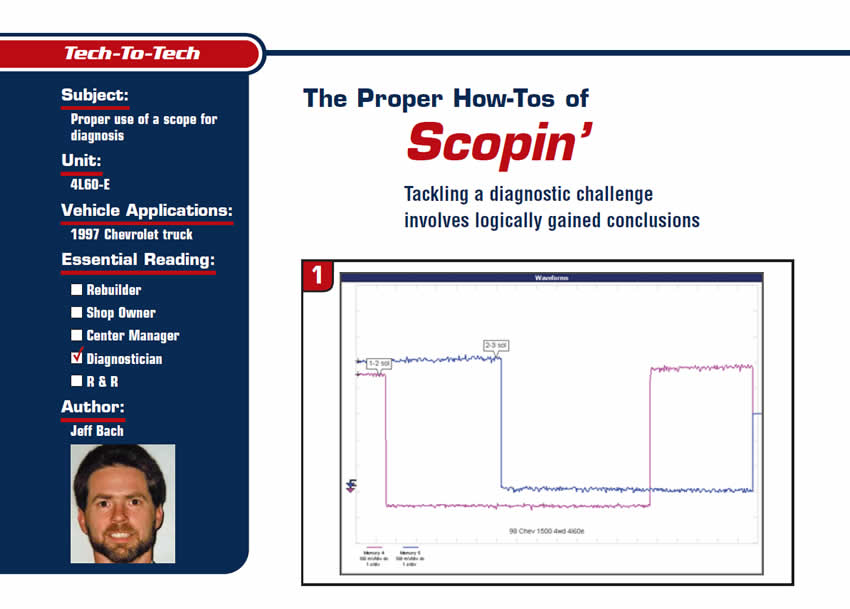
Tests Explain Why Beetle Won’t Run
I finally find a one-page black-and-white wiring diagram that’s close in one of my information services’ archives section. I start this “project” with expectations of finding the usual extra problems created by the well-meaning “wannabe” technicians through whose hands this car has passed since its demise some four years ago, according to its registration. It’s also had two different owners since it last ran on its own systems. I find an overfull crankcase with the smell of stale fuel, carboned-up spark plugs and a sensor connector terminal with “baby bird mouth” syndrome.
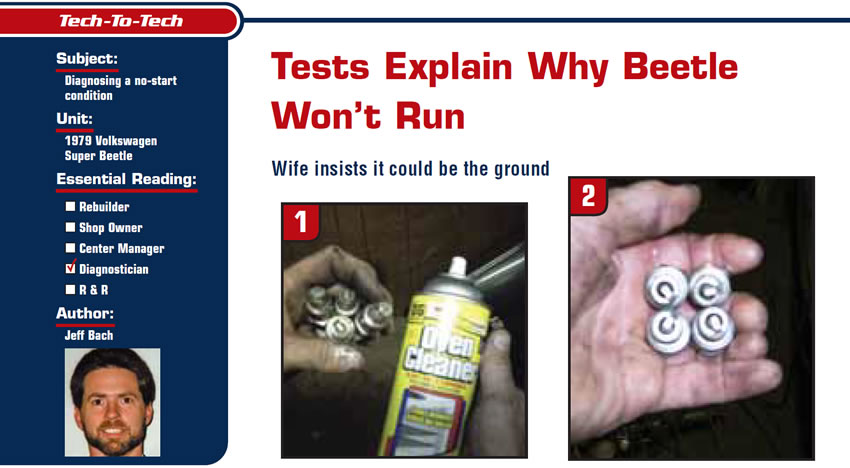
Walt’s ’57 ECM Woes
“Drive by wire,” if you’re not familiar, is a system of throttle control using a set of accelerator-pedal-position (APP) sensors to tell the engine-control module (ECM) what the driver would like to have happen with the throttle. The ECM uses a throttle-actuator control (TAC) module, which opens and closes the throttle plate to the desired angle. The TAC module contains a set of throttle-position sensors that operate linearly opposite each other the same way as the APP sensors. Contained inside the TAC module is also an actuator that is driven by the ECM that moves the throttle plate itself.
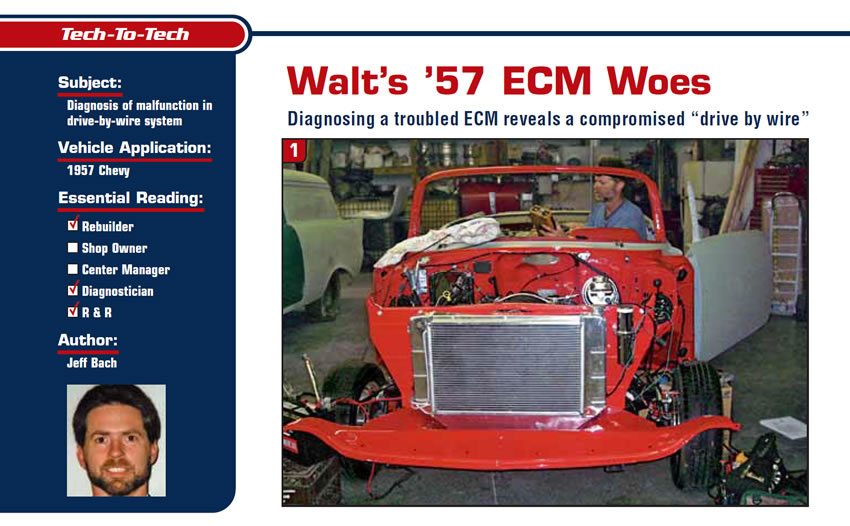
Pinpointing a Chrysler’s No-Start
This time, however, he was trying to decide on whether to retire this car and move on to another. He has two vehicles already running well, and this one is a spare. Clean as a pin for a ’91 and still well under 100,000 on the clock. Ideally, I’d like to have been able to tell him what the cost would be to get the car running without spending a lot of diagnostic time trying to find out why it quit. I mean, it’s a 3.3 Chrysler; how hard can it be?
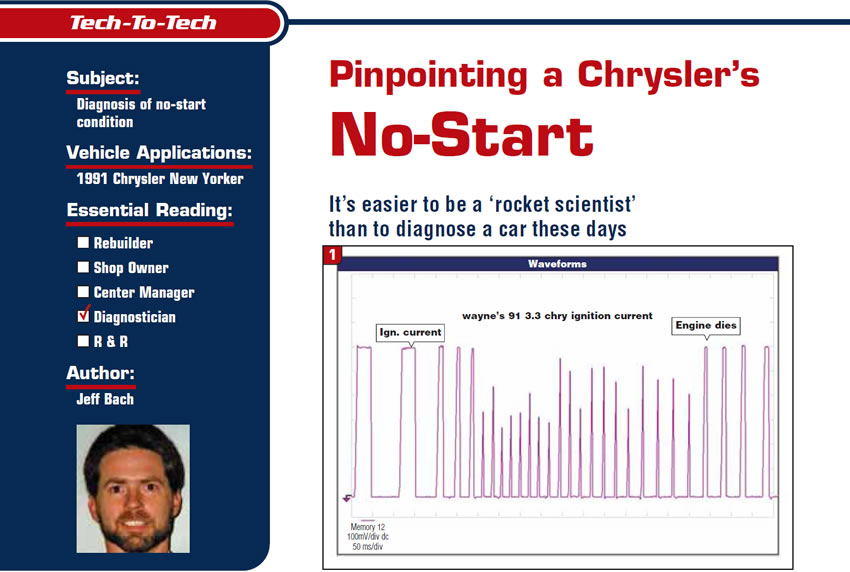
And Then There’s Paul
Paul’s list of problems with his car consists of some of the definitions that technicians (especially flat-rate techs) love to hate. Things like “The heat doesn’t always come out right” and “Sometimes the transmission doesn’t want to go like it should” or “The dash doesn’t light all the way up, and the radio needs a new speaker in the back right.”
